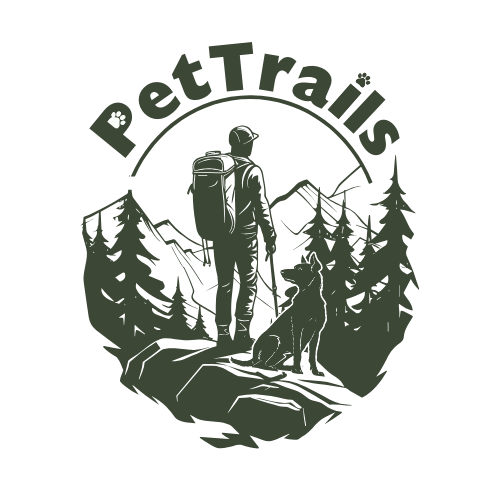
Solo Hiking with Your Dog: Safety and Self-Reliance on Remote Trails
Share
There’s nothing quite like exploring remote trails with just your dog by your side. Without the distractions of human company, you're free to soak in nature’s silence and the simple companionship of your pup. Solo hiking can be empowering and peaceful, but when you're the only one responsible for both yourself and your dog, preparation becomes your best ally.
Whether you're heading out for a challenging backcountry loop or a quiet day on a lesser-traveled trail, this guide will help you tackle the adventure with confidence, safety, and respect for the wilderness.
Why Hike Solo with Your Dog?
- Unmatched Bonding: One-on-one time builds trust and deepens the bond between you and your dog.
- Total Flexibility: Adjust pace, routes, or breaks as needed.
- Nature's Therapy: Solo hikes offer calm, mental clarity, and emotional balance for both human and dog.
Planning Ahead: Safety Starts Before the Trail
1. Choose the Right Trail for Your Dog
- Match trail difficulty with your dog’s age, size, breed, and conditioning level.
- Avoid steep or technical terrain for short-nosed breeds (e.g., pugs, bulldogs) or seniors with mobility issues.
2. Vet Check & Fitness Assessment
- Schedule a check-up to ensure your dog is healthy enough for hiking.
- Start with short solo outings and increase distance gradually.
3. Breed-Specific Considerations
- Heat-sensitive breeds (like boxers and Frenchies) need shaded trails and cooler climates.
- Heavy-coated dogs may struggle in warm weather but thrive in cooler seasons.
- Older dogs need shorter trails, softer terrain, and more frequent rest.
Hydration & Heat: Vital Trail Survival
1. Preventing Heat Stroke
Dogs are more susceptible to overheating than humans. Watch for:
- Excessive panting
- Drooling or glazed eyes
- Unresponsiveness or staggering
Prevention Tips:
- Hike during cooler hours (early morning or evening).
- Rest in shaded areas frequently.
- Carry a collapsible bowl and offer water every 15–30 minutes in hot conditions.
- Use cooling vests or soak bandanas for dogs prone to overheating.
2. Water Safety & Purification for Dogs
- Assume all natural water sources could contain Giardia or other pathogens.
- Bring a filter or purification tablets suitable for both you and your dog.
- Never allow your dog to drink from stagnant or algae-covered water.
Pro Tip: Train your dog to drink from a portable bowl rather than directly from streams or lakes.
Smart Packing for Self-Reliance
Essential Gear for You:
- Satellite communicator or GPS beacon
- Offline maps and compass
- First aid kit (with human and dog-specific supplies)
- Extra food, water, and emergency bivvy
Essential Gear for Your Dog:
- Sturdy harness with ID tags
- Leash or hands-free belt leash
- Collapsible bowl, extra water, high-energy snacks
- Booties and paw balm for rough terrain
- Reflective or light-up collar for visibility
On the Trail: Safety and Awareness
1. Monitor Your Dog’s Condition Constantly
Know the signs of fatigue, pain, or injury:
- Limping, slowing down, or lying down suddenly
- Unusual vocalizations
- Avoiding eye contact or lagging behind
Respond early: Rest, rehydrate, and inspect paws or joints. Don’t push your dog past their limit—carry a sling or emergency harness if needed.
2. Waste Management & Leave No Trace
- Always pack out your dog’s waste using compostable bags or bury it 6–8 inches deep, at least 200 feet from water sources.
- Never allow your dog to chase wildlife. Keep them leashed near animal habitats or migration corridors.
- Respect trail rules—off-leash only where explicitly permitted.
3. Training Essentials
- Reliable recall and “leave it” commands are non-negotiable.
- Practice calm behavior around wildlife, hikers, and unexpected trail surprises.
Backup Planning: Emergencies & Communication
- Know the closest vet or animal hospital near your trailhead.
- Keep emergency contact numbers accessible.
- Leave your detailed trip plan with someone you trust—including your route, check-in time, and return ETA.
- Use GPS tracking collars or tags for deep backcountry hikes.
Embrace the Solitude
Solo hiking with your dog brings peace, purpose, and a renewed sense of partnership. But it also demands preparation, awareness, and respect for nature’s unpredictability.
Let your dog sniff, explore, and wander (safely). Capture those shared trail moments, because in the quiet of the wild, you'll find more than just beautiful views.
Final Word
Every successful solo hike with your dog builds on the last one. What starts as careful preparation eventually becomes second nature, until you and your pup move through the wilderness with the quiet confidence that only comes from truly knowing each other and respecting the environment you're exploring together.
Got a solo hiking story or lesson learned? Share it in the comments or tag us on social with your favorite trail photos.
